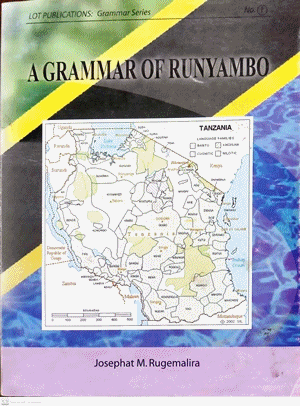According to the preliminary report of the 2002 census, the population of Karagwe was 425,476. The indigenous inhabitants of Karagwe call themselves abanyambo and refer to their orurími ‘tongue/language’ as orunyambo or occasionally as ecinyambo. Since there has been considerable confusion in the literature on this score, a few clarifications are in order. The confusion is of two kinds. First, there is confusion in naming and locating the land, the people, and the language. This confusion apparently originates from Bryan (1959:107) who lists “nyambo (ru-)” and “Karagwe (ru-)” as two distinct languages spoken in the same area, then Tanganyika Territory, south of the Kagera River. Although Rubanza (1988) correctly identifies Karagwe as the name of the old Kingdom, he wrongly aligns it2 with a “Mwani” dialect and never mentions Runyambo except in connection with Guthrie’s and Nurse’s works. What should be clear is that Karagwe is not the name of a language, a people, or even a town. It refers to an administrative territory much larger than a town or a village.
The second type of confusion is inherently controversial, having to do with the problem of defining and identifying languages and dialects. Guthrie (1948, 1967-71), Bryan (1959), Bastin (1978), and Nurse (1979) after him, identified Runyambo (E21) and Ruhaya (E22) as distinct languages (the latter with the Ziba, Ihangiro, and Hamba dialects). Heine’s (1972) classification, however, only mentions Ruhaya. And from the perspective of the two most extensive studies of Ruhaya, Byarushengo et al. (1977) and Rubanza (1988), Runyambo does not exist. In this regard works by Bickmore (1989a, 1992) and Rugemalira (1993b, 2002), are significant for having, at least, reaffirmed Runyambo’s place on the map.


